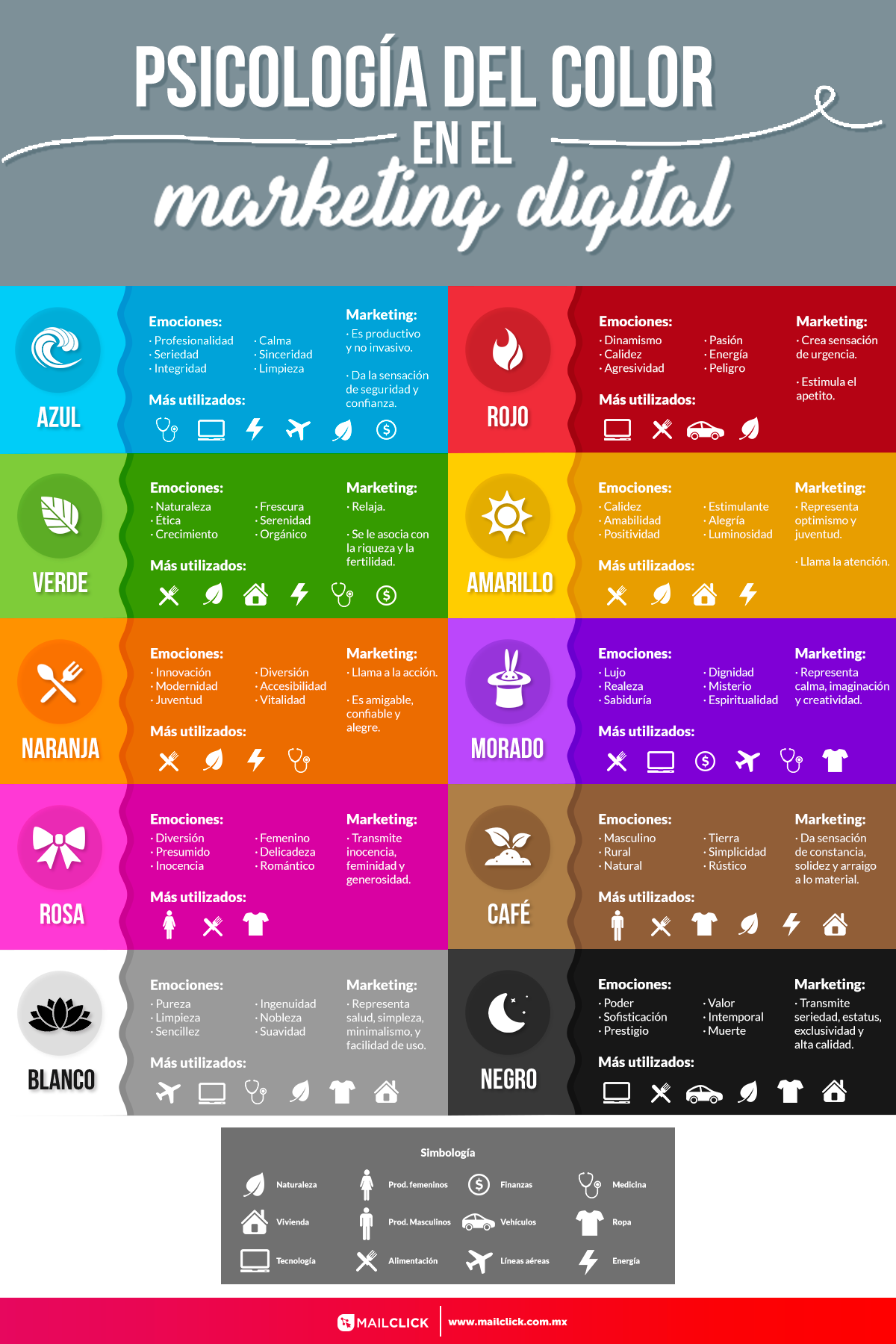The Psychology of Color Applied to Digital Marketing
The psychology of color is a fundamental tool in digital marketing. The choice of appropriate colors on your website, advertising, or brand image can have a significant impact on consumers' perception of your company and their behavior. In this article, we will delve into how the psychology of color is applied to digital marketing and how you can use it to increase your business's success.
What is the Psychology of Color?
The psychology of color is a branch of psychology that studies how colors affect the human mind. Colors have a subconscious effect on our brain, evoking emotions and affecting our perception of the world. This discipline has been studied for many years and has demonstrated that colors can influence our perception of the brand, affect our purchasing decisions, and create a specific atmosphere on a website or advertisement.
The Psychology of Color in Digital Marketing
In digital marketing, choosing the right colors is essential to creating a coherent and effective brand image. Each color evokes a series of emotions and feelings, and these must be carefully chosen to create the desired perception in your audience.
Red: The Color of Urgency
Red is a very striking and vibrant color that evokes strong emotions such as passion and urgency. It is a popular color in marketing, especially in time-limited promotions and offers. The color red increases heart rate and blood pressure, making it very effective in capturing consumers' attention. It is important to use it in moderation, as it can be perceived as aggressive or intimidating if used excessively. Examples of brands that use the color red in their brand image include Coca-Cola, Red Bull, and Target.
Blue: The Color of Trust and Serenity
Blue is a color that evokes emotions of tranquility and trust. It is a popular color in marketing, especially in the technology industry. The color blue has been shown to have a calming effect on the brain, making it an effective color to convey a sense of calm and professionalism. Examples of brands that use the color blue in their brand image include IBM, Facebook, and Ford.
Green: The Color of Health and Nature
Green is a color associated with health and nature. It is a popular color in the marketing of ecological and healthy products. The color green has a relaxing effect on the brain, making it an effective color to convey a sense of calm and balance. Examples of brands that use the color green in their brand image include Whole Foods, Animal Planet, and Tropicana.
Yellow: The Color of Happiness and Joy
Yellow is a bright and optimistic color that evokes emotions of happiness and joy. It is a popular color in marketing, especially in promotions and offers. The color yellow has been shown to stimulate the brain and increase mental clarity, making it an effective color to capture attention. However, it is important to use it in moderation, as too much yellow can be perceived as aggressive or chaotic. Examples of brands that use the color yellow in their brand image include McDonald's, Best Buy, and Nikon.
Black: The Color of Elegance and Exclusivity
Black is an elegant and sophisticated color that evokes emotions of seriousness and authority. It is a popular color in the marketing of luxury and exclusive products. The color black has been shown to have a psychological slimming effect, making it popular in the fashion industry. Examples of brands that use the color black in their brand image include Chanel, Nike, and Apple.
White: The Color of Purity and Simplicity
White is a clean and pure color that evokes emotions of freshness and simplicity. It is a popular color in marketing, especially in the technology industry. The color white has a relaxing effect on the brain, making it an effective color to convey a sense of calm and balance. Examples of brands that use the color white in their brand image include Apple, Tesla, and Google.
Using Color in Your Digital Marketing
When choosing the colors for your digital marketing, it is important to consider your brand's message and target audience. The psychology of color can help guide your color choices to evoke the desired emotions and behaviors from your audience.
In addition, it is essential to maintain consistency in your color choices across all your digital marketing efforts. Using a consistent color scheme creates a cohesive brand image and helps your audience recognize your brand more easily.

Conclusion
The psychology of color is an important tool in digital marketing. Understanding the emotions and behaviors that colors evoke can help you choose the right colors to create a cohesive brand image and evoke the desired emotions and behaviors in your audience. By using the psychology of color, you can increase the effectiveness of your digital marketing efforts and improve your overall success.


 Español
Español English
English


Comment this post